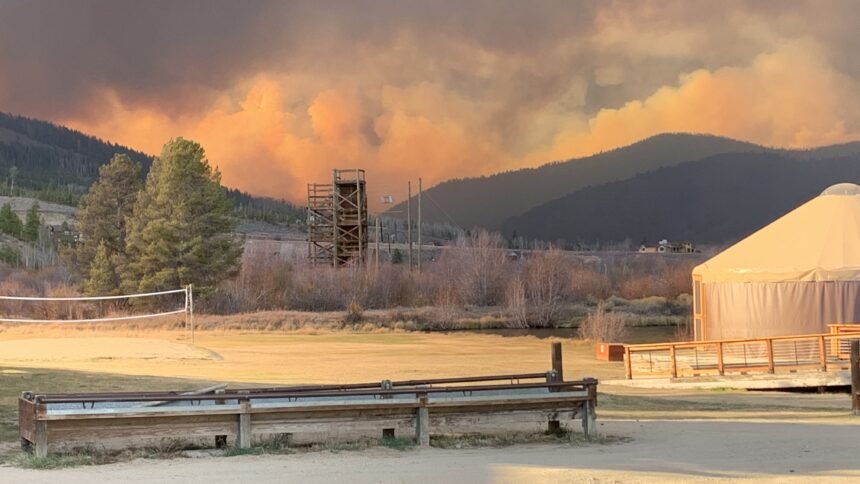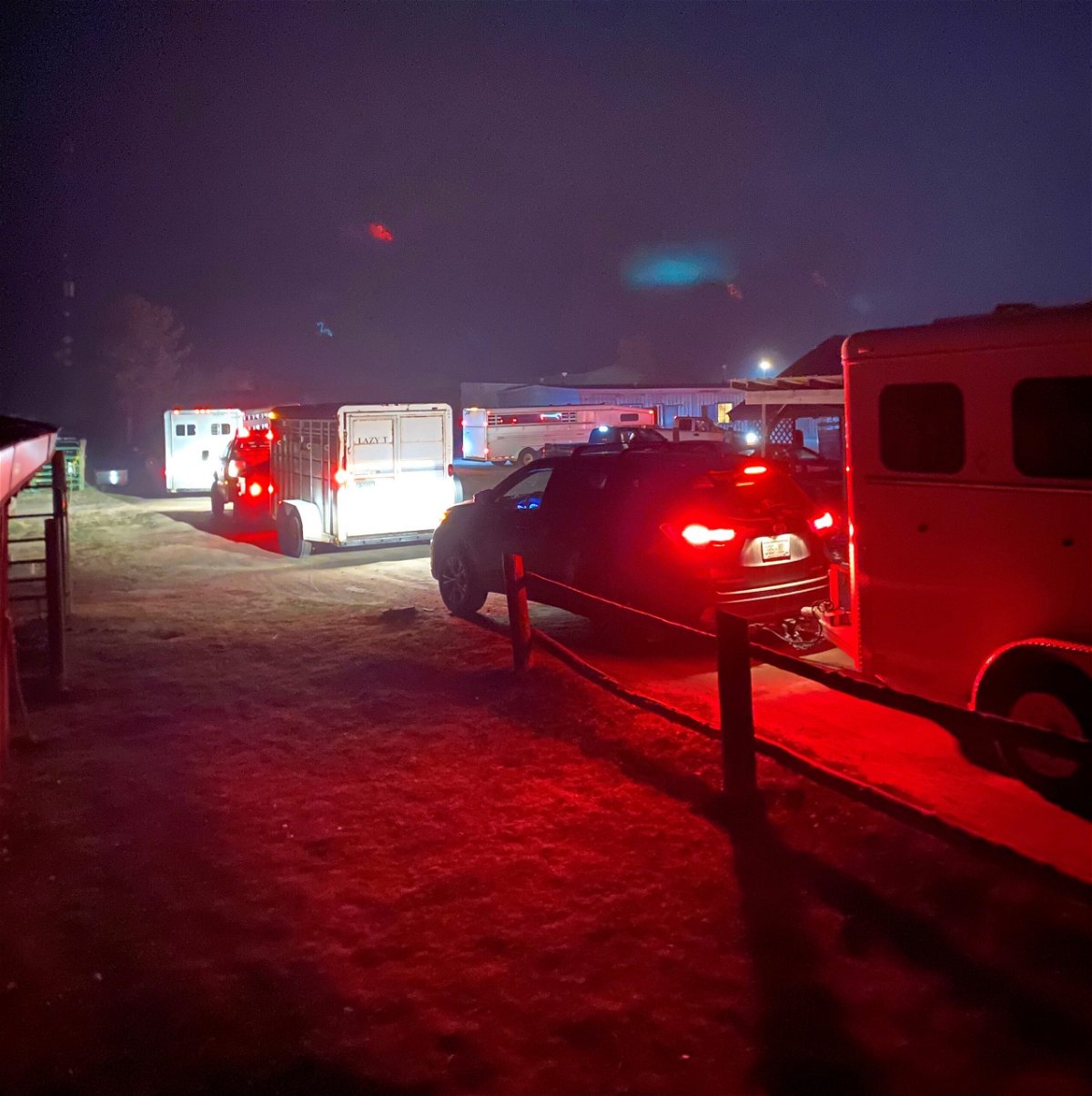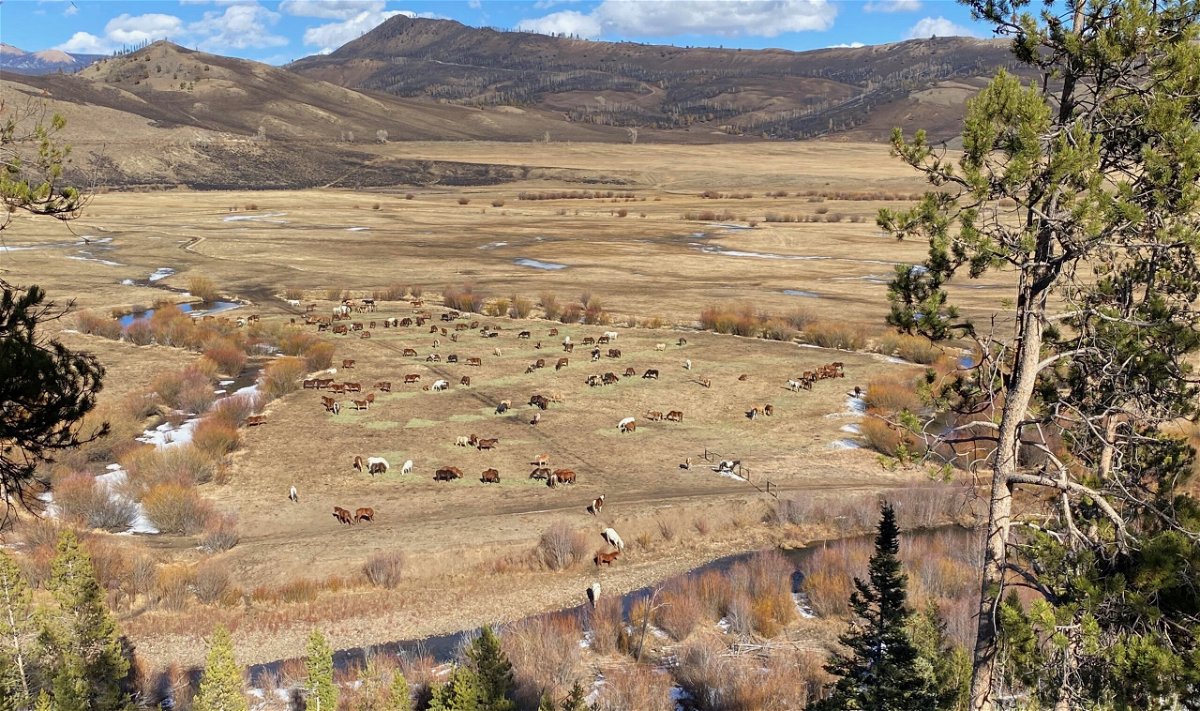How to rebuild after Colorado’s devastating wildfire season

COLORADO SPRINGS, Colo. (KRDO) -- The 2020 wildfire season brought destruction and devastation across the state of Colorado. Now, as many begin to rebuild their lives from the ashes, others are calling this wildfire season a wake-up call.
Combined, the three largest fires in the state this year burned more than 540,000 acres.
The Cameron Peak fire began August 13, and by October 18 it became the first fire in state history to surpass 200,000 acres, according to Cameron Peak fire Public Information Officer Ashley Farinacci.
“It was a very large concern right off the bat because of the terrain it was growing in. Especially with all the downed and beetle-killed trees. We recognize that those are just matches ready to go,” says Farinacci.
She described the fire by using the Swiss Cheese Theory, which is the idea when you line pieces of swiss cheese up eventually all the holes are going to align, and that’s when things go terribly wrong.
The terrain was rugged, winds around 70 mph didn’t allow helicopters to fly and also put ground crews at risk of falling trees.
The East Troublesome Fire, on the other hand, took first responders and people living in the area by surprise.
KRDO spoke with David Craig, the general manager for the C Lazy U Ranch in Granby County, who recounted the moments after finding out the fire crossed Highway 125.
“We didn’t really anticipate a fire of this size coming this quickly, requiring us to evacuate the horses from the entire ranch.” Craig went on to say the ranch has always had a fire plan, but this time was different.
The ranch found out around 3:30 p.m. on October 22 they needed to get out now. Craig said staff immediately began calling friends and ranchers nearby to help move 200 horses.
“It was really incredible how quickly the word of mouth spread because probably by, I would say, 5:30 or six o’clock there was literally a line of horse trailers a quarter-mile long waiting to help us move our horses,” Craig said, adding that they managed to move the entire herd in less than two hours.
“We had people coming from as far away as Colorado Springs, Aspen, Vail, and offers from Wyoming. The outpouring of support was really overwhelming, it just brought a tear to your eye.”

After all the animals and staff were evacuated, what happened to the ranch was left up to the mercy of the fire.
While the ranch did lose a few buildings, Craig told KRDO the one loss that cut the deepest was losing Hay Barn. Built-in 1922, it was referred to as the compass of the C Lazy U Ranch. However, thanks to the quick thinking of Grand County Sheriff Brett Schroetlin, the adjacent buildings managed to survive.
“He was leaving the fire up north and he just happened to, because we’re friends, he drove down the ranch road just to kind of see how things were looking. It was at that point he saw that our iconic barn, built-in 1922, was on fire.” Craig said.
Schroetlin immediately dispatched crews into the area, saving the barn.

“I firmly believe that we saved probably most of the core ranch buildings because he made a decision at the last minute,” Craig said.
While the Hay Barn was lost, the Patio House, which is home to the Outfitters Cabin, game room, and an outdoor pool, was saved. Currently, the C Lazy U Ranch is closed.
Predicting the 2020 wildfire season
Before the fires even began, climate scientists were aware of a potentially dangerous fire season. In past years, there has been intermittent rainfall during the fire season, but that wasn’t the case in 2020 according to Dr. Imtiaz Rangwala, a research scientist at the University of Colorado Boulder.
Rangwala works on providing climate science information for federal and state land.
“It’s not a big a surprise if I’m being frank with you,” says Rangwala. "We are expecting the records and all these impacts to be beaten year after year.”
He said that while this fire season was expected, what’s shocking is how quickly and rapidly the climate in Colorado is changing.
“We’ve been predicting this for over two decades,” Rangwala said, “but the speed at which this is happening is faster than what we’re projecting. That’s the danger, that’s the worrisome sign -- are we underpredicting, are we being more conservative in our projections to the world?”
Between May and October, precipitation was less than one-tenth of a normal year according to Rangwala. While 2020 might not be the worst drought in recent years, Colorado did experience a significant dry spell this summer.
The dryness in the atmosphere put more pressure on the land, meaning plants became drier because they were stressed to supply moisture that just wasn’t there this year.
“The high atmospheric evaporation demand is one very favorable condition for very large and intense wildfires to occur,” Rangwala reports.
Temperatures were above normal, and the evaporative demand was at or near record highs for large portions of the state, particularly the western slope region.
A naturally occurring weather pattern might’ve also had a hand in this year's fire season, particularly the Cameron Peak Fire.
According to the National Weather Service, La Nina is a periodic cooling of ocean surface temperatures in the central and east-central equatorial Pacific. With a La Nina, abnormally strong winds and intense droughts are common.
While this fire season might’ve been more than what Colorado is used to, it is nearly identical to what’s happening along the west coast.
“I certainly don’t think this fire is behaving differently than any other fire happening in California,” Farinacci said in reference to the Cameron Peak fire.
What can we do?
Preventing wildfires can seem like a daunting task, but according to the National Park Service, nearly 85% of wildland fires in the U.S. are caused by humans. While there are things out of our hands, Rangwala insisted we’re past the point of leaving it up to experts, and it’s the average person who truly can make a difference.
Similar to the mitigation efforts that helped firefighters during the Bear Creek Park fire in Colorado Springs earlier in November, Farinacci encourages people to be conscious of defensible space around their homes, saying that could be the difference between losing your home or keeping it. She recommends Coloradans go to the Firewise website for tips on protecting your home.
If you don’t have a home in the mountains, another way to prevent wildfires is to be conscious of the impact you have whenever visiting a state or national park.
Farinacci says, “Know before you go and leave no trace.”
Know before you go can mean making sure you have the right equipment, maps saved on your phone, checking fire restrictions in the area, and anything else you think you might need to ensure your visit to a national or state park is safe.
Leave no trace means ensuring your actions won’t trigger a wildfire. If you’re going out on an ATV or dirt bike, Farinacci says to make sure you have the proper equipment to ensure no sparks will fly. Another activity that could trigger a fire is shooting a gun anywhere that isn’t designed for target practice.
“It’s important to not be a bystander,” Farinacci says. “It takes a lot of guts to speak up and say something to someone else but I think we all have to do that at this point. We love these places and we have to be protecting them.”
Beyond being mindful of potential fire hazards, Rangwala says it’s important to look at the bigger picture that comes with the changing climate in Colorado.
“The next ten or five years is already built into the pipeline. We cannot change it dramatically, it’s really we have to change beyond that for the next generation,” Rangwala said.
He went on to say the best things people can do is educate themselves on wildfire safety, reduce admissions, and calling for climate change to become a more pressing matter both locally and federally. Rangwala says living in Colorado will also require adapting and accepting that these massive fires will likely continue.
While the 2020 wildfire season might be a wake-up call, it also proved how incredibly resilient Coloradans can be.
The C Lazy U Ranch is in the process of rebuilding. After nearly a month later the horses are back, safe, and happy in a pasture that wasn’t affected by the fire. Craig says now the ranch is looking towards the future.

“Our team is excited to rebuild,” Craig says “we’re just gonna make the ranch come back stronger and better than it ever was before."
"Editor’s Note: This story has been updated to correct that the barn was not spared by the fire, however, the surrounding buildings were saved by the crews dispatched by Schroetlin.
